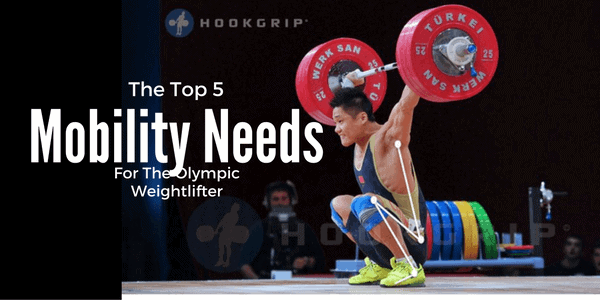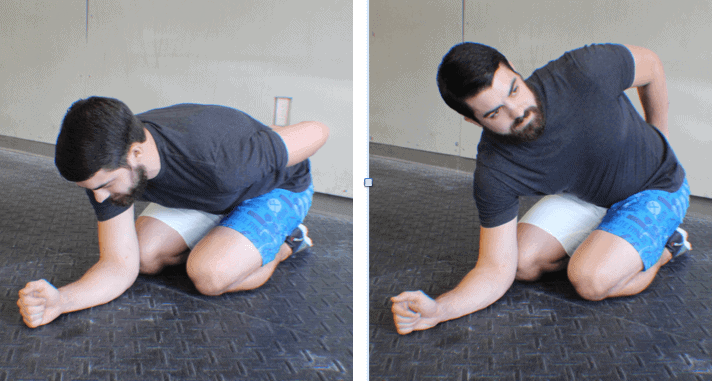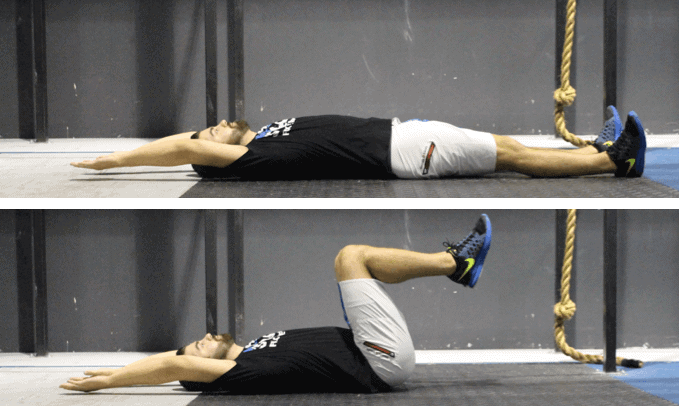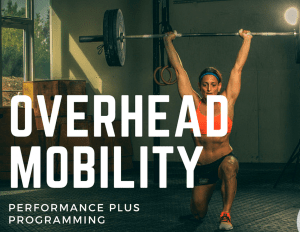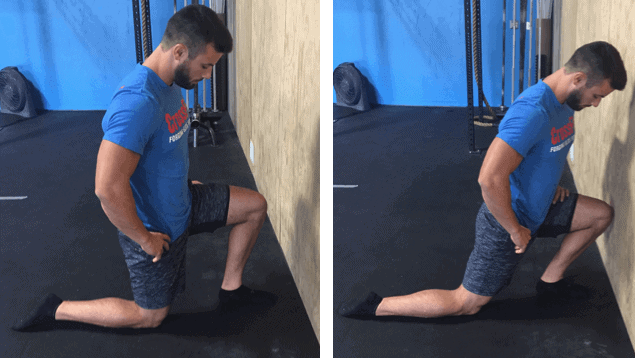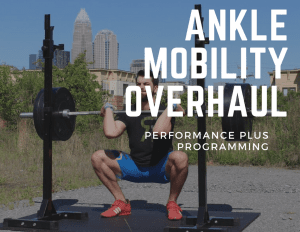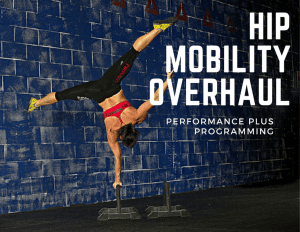Weightlifting Mobility Needs
As much as any other sport, Olympic weightlifting requires incredible mobility if an athlete is to perform the lifts with proper technique and lift maximum weights. Without enough mobility, athletes will lack full depth and positioning, as well as expose themselves to potential injuries. Olympic weightlifting mobility
Thoracic Spine
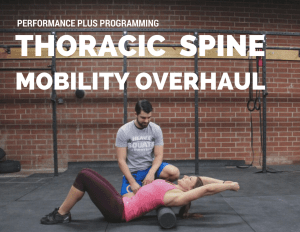
While passive extension in the thoracic spine is a prerequisite to achieving a solid overhead position, more often than not, athletes lack thoracic extension strength, or ‘active mobility’ in these positions, more so than a passive mobility restriction. Building in more active thoracic spine extension drills into your training will lead to a much improved thoracic spine position that can withstand and support PR-loads overhead without compromising position.
To assess your thoracic spine mobility, try this lumbar locked thoracic spine rotation test. While sitting back on your heels and keeping one arm behind your low back, a bisecting line from both shoulders should rotate to greater than 50 degrees from horizontal. An inability to achieve full rotation could be due to a mobility limitation or lack of stability/strength.
Lat Restriction
Every veteran weightlifter knows the importance of full overhead shoulder mobility. Of the many components that play into achieving full shoulder flexion overhead, one of the most common limiters is lat extensibility. Many who make the transition from CrossFit or hypertrophy-style training to Olympic lifting have spent a tremendous pulling heavy loads, and have left their lats very tight.
To assess your lat extensibility, start by laying flat on your back. Take your arms overhead close to your ears & touch the floor with your thumbs. Next, bring both knees up to your chest, so your thighs are greater than 90 degrees from horizontal.
Attempt to touch your thumbs to the floor again. If you notice a reduced range of motion and you’re unable to touch the floor with your knees to your chest, a lat extensibility restriction may be present.
Dorsiflexion
Arguably the most common restrictions we see weightlifting mobility, and most athletes are limited ankle dorsiflexion — the ability for the knee to track forward over the toe. At the same time, the foot is planted on the ground. Due to its position in the closed kinetic chain, limitations in ankle dorsiflexion can lead to a host of compensations upstream, including knee valgus, excessive pelvic reversal, or ‘butt wink’, an increased forward torso angle, & excessive shoulder abduction. While Olympic lifting shoes attempt to buffer limitations in ankle mobility, there’s no outrunning the need for full ankle mobility in the Olympic weightlifter.
To screen your ankles for full mobility, try this knee-to-wall self-assessment. With shoes off, start with your foot 4-inches away from the wall. For a less precise but quicker test-retest, use the width of your hand as a quick measurement distance.
While keeping your heel down the entire time, push your knee forward to be able to touch the wall. Ensure your knee tracks over the second or third toe to prevent the urge to collapse the midfoot and direct the knee inside the first toe. If you’re unable to touch the wall without your heel rising, move forward 1-inch and retest until you identify your current mobility limits.
Hip Flexion
Being able to fully flex the hip is a necessity if an athlete wants to hit full squat depth during the Olympic lifts. Not squatting to full depth will drastically reduce the weight lifted.
I use the above test to determine the optimal stance width for deep squats. Every athlete has a unique hip structure, meaning no two athletes will have the same stance. Performing the hip scour test will help identify your optimal squat stance. The majority of athletes automatically choose this stance. But, for a surprising number of athletes, this test will show them they’ve been utilizing the wrong stance.
Hip Extension
If an athlete lacks proper hip extension during the split jerk, major compensations will occur. Most often in the lumbar spine. Because the back leg can’t fully open up, these athletes will go into excessive lumbar extension during the jerk.
To assess hip extension, we use the Thomas Test, as shown below. The athlete lies at the end of a box and holds on the thigh while the other is lowered by a partner.
The partner assess first if the thigh reaches an angle parallel to the ground. If not, psoas tightness is the most likely restriction.
Next, the partner assess the rectus femoris by bending the athlete’s knee to 90 degrees. If tightness is present, the hip will rise, or the knee won’t reach 90 degrees.
Finally, the lateral angle of the thigh is examined. It should stay directly forward, but if it deviates laterally, then TFL tightness is to blame.

